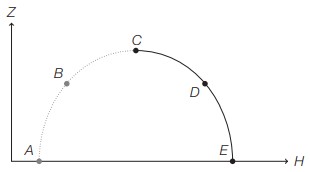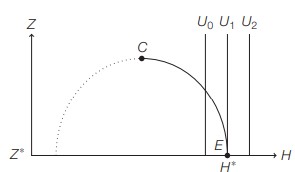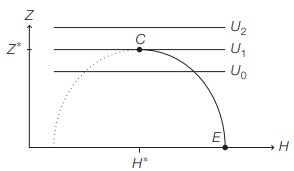Health Economics BHT CH 1-5
0.0(0)
0.0(0)
Card Sorting
1/122
Earn XP
Description and Tags
Study Analytics
Name | Mastery | Learn | Test | Matching | Spaced |
|---|
No study sessions yet.
123 Terms
1
New cards
The flatter/more horizontal the curve, the price is more
**Elastic** & sensitive
2
New cards
In a **non-randomized** setting, the study will
**Overestimate** healthcare demand at low prices and **underestimate** demand at high prices
3
New cards
The increase in healthcare is due to
the new scientific discoveries and technological improvements
4
New cards
Healthcare market differs from other markets for one major reason
uncertainty
5
New cards
Non-random selections distort estimated demand curve in what way?
the groups facing each price level differ in important ways
6
New cards
What results in no **selection bias**?
A large sample size + randomization
7
New cards
Marginal efficiency of capital curve shows how efficient each unity of health capital is in increasing
lifetime utility
8
New cards
Physicians may not be perfect agents of healthcare for patients due to all of the following **EXCEPT**
Medical arms race
9
New cards
What is selection bias from comparing observed outcomes of the treated and non-treated groups?
Difference in group means = selection bias + TOT
10
New cards
Randomized Experiement
study that assigns treatments randomly to different groups of study participants
\
Includes treatment group and control group (also randomly chosen and receives no treatment)
\
Includes treatment group and control group (also randomly chosen and receives no treatment)
11
New cards
What are the potential **problems** associated with this **non-randomized** approach?
not generalizable nor representative of the area
\
Selection bias
\
Selection bias
12
New cards
RAND Health Insurance Experiment (HIE)
First large-scale experiment with random assignment of insurance status
\
After publishing, the demand curve for health care is not vertical but downward-sloping
\
After publishing, the demand curve for health care is not vertical but downward-sloping
13
New cards
Copayment/Coinsurance rate
fraction of the medical bill which the **patient** is responsible for
14
New cards
Oregon Medicaid Experiment (ME)
Involved two groups of **low-income** adults in Oregon
15
New cards
Cost-sharing plan
one with positive copayment rate, so that costs are shared between the insured and the insurer
16
New cards
Claim: both the RAND Health Insurance Experiment and the Oregon Medicaid Experiment found compelling evidence for the effect of the price of healthcare on mortality
False
\
found much impact on utilization
not much compelling evidence on mortality/morbidity
\
negative correlation between price and demand
\
found much impact on utilization
not much compelling evidence on mortality/morbidity
\
negative correlation between price and demand
17
New cards
Outpatient Care
any interaction with a doctor or other medical care professional that **does not involve** an **overnight stay**
18
New cards
Inpatient Care
any interaction with a doctor or other medical professional that **involves** an **overnight stay** at a hospital
19
New cards
Emergency Room (ER) Care
any interaction with a doctor or other medical care professional that **involves the emergency room**
20
New cards
RAND HIE and Oregon Medicaid Experiment gathered use and spending data for
mental health care, dental care, and prescription drug use
21
New cards
Claim: in the Grossman model, the marginal efficiency of investment in healthcare increases as health improves
False
\
once health is optimal, there is little improvement if invested
\
once health is optimal, there is little improvement if invested
22
New cards
Key assumption for differences-in-differences
in absence of treatment, the trends should move in parallel
23
New cards
When should you use **regression discontinuity**?
the graph has **only one** line with a discontinuous jump
\
There are “cutoff” rules that determine actions individuals may take and seem arbitrary
\
There are “cutoff” rules that determine actions individuals may take and seem arbitrary
24
New cards
When should you use **differences-in-differences**?
the graph has **two** lines
25
New cards
Arc Elasticity of Demand
Treats price **increases** and price **decreases** *symmetrically*

26
New cards
Price-Elastic
|e| >= 1
27
New cards
Price-Inelastic
|e| < 1
28
New cards
Unit Elastic
|e| = 1
29
New cards
Perfectly Inelastic
|e| = 0
30
New cards
Claim: health is something that both happens to you and something you choose
True
31
New cards
Grossman Model
Health is a consumption good, input into production, and a form of capital
\
ties together the health decisions that people make on a daily basis
\
ties together the health decisions that people make on a daily basis
32
New cards
Single-Period Utility
In a given period, an individual’s utility depends on her health and other non-health goods
\
Ut = U(Ht, Zt)
\
Ut = U(Ht, Zt)
33
New cards
What is Ht in the Grossman Model’s single-period utility
level of health
34
New cards
What is Zt in the Grossman Model’s single-period utility
composite good that includes everything else
\
**home good**/all other goods
\
**home good**/all other goods
35
New cards
How does healthcare affect utility through Ht?
Health level (Ht) **increases**
Utility **increases**
Utility **increases**
36
New cards
Time Constraint within a Single Period
Θ = Tw + TH + TZ + Ts
37
New cards
What time constraint is **wasted time**?
Ts (time spent being sick)
38
New cards
What time constraint **improves BOTH H and Z**?
Tw (time spent working)
\
earns money/income to improve
\
earns money/income to improve
39
New cards
What time constraint **improves Z**?
TZ (time spent playing)
40
New cards
What time constraint **improves H**?
TH (time spent improving health)
41
New cards
Productive Time in Grossman Model
Tp = Total Time(Θ) - Ts
42
New cards
Average Treatment Effect (ATE)
avg(Y_treated) - avg(Y_untreated)
43
New cards
In the **Grossman model**, neither Ht nor Zt can be purchased directly in the market
Must be **combined** with personal **time** to produce inputs into **utility**
44
New cards
Difference between Ht and Zt
Zt is **assumed to be created and consumed each period**
\
Ht is a stock that accumulates/deteriorates over time
\
(Yesterday’s *health* affects today’s *health* ***BUT*** Yesterday’s *time* does NOT affect today’s *time*
\
Ht is a stock that accumulates/deteriorates over time
\
(Yesterday’s *health* affects today’s *health* ***BUT*** Yesterday’s *time* does NOT affect today’s *time*
45
New cards
What is Mt in the production function Ht = H(Ht-1, TH, Mt)?
market inputs like vaccines and treadmills into health H during period t
46
New cards
What is Jt in the production function Zt = Z(Tz, Jt)?
market inputs like video games and opera tickets into the home good Z
47
New cards
Market Budget Constraint
cannot spend more than you earn assuming there is no option to save
48
New cards
The relationship between Ht and Ts is
negative
49
New cards
The relationship between Ht and Tp is
positive
50
New cards
How is health a **consumption good** according to the Grossman Model?
It contributes directly to the individual’s utility function each period. Being healthy is valuable in and of itself.
51
New cards
How is health a **input into production** according to the Grossman Model?
It generates productive time Tp which is useful for producing more H and Z
52
New cards
How is health a **form of capital** according to the Grossman Model?
Unlike the home good, it endures from period to period.
It can accumulate (or depreciate) over time, so improvements in health today can lead to better health tomorrow.
It can accumulate (or depreciate) over time, so improvements in health today can lead to better health tomorrow.
53
New cards
Production Possibility Frontier (PPF)
Graphical model that illustrates central economic concepts and the core issues of production and allocative efficiency
54
New cards
What does the PPF do?
maximizes output combinations of Ht and Zt, given an individual’s budget and time constraints
55
New cards
How is the standard PPF different from the Grossman PPF?
P would not be feasible for the Grossman Model because the person would be dead (no health = dead)
56
New cards
Where is the Optimal Ht and Zt located on the Grossman PPF?
Between C and E
need to introduce preferences or indifference curves to give optimal point
need to introduce preferences or indifference curves to give optimal point
57
New cards
What is the key prediction of the Grossman Model?
optimal level of health is **less** than the maximum
\
individuals makes **trade offs** leading to less than maximal health
\
individuals makes **trade offs** leading to less than maximal health

58
New cards

What can be said about this individual? (Grossman PPF w/ vertical indifference utility)
Individual only cares about **health**
\
Indifference curves are **vertical** because home good does **NOT** have effects on utility
\
Indifference curves are **vertical** because home good does **NOT** have effects on utility
59
New cards

What can be said about this individual? (Grossman PPF w/ horizontal indifference utility)
Individual only cares about **home good**
\
Indifference curves are **horizontal** because health does **NOT** have effects on utility
\
Indifference curves are **horizontal** because health does **NOT** have effects on utility
60
New cards
Marginal Efficiency of Capital (MEC) Curve
shows how efficient each unit of health capital is in **increasing** lifetime utility
61
New cards
Costs of Health investment
alternative market investments that pay an interest rate *r* and depreciation due to aging γ
62
New cards
Why must health pay a return of at least r + γ?
Other options will be more attractive if health pays a return of less than r + γ
63
New cards
When health H is low
the rate of return is higher than r + γ
64
New cards
increased γ
more depreciation as time goes on
\
increases with age
\
increases with age
65
New cards
Costs of health increase with age
individuals are less willing to spend productive time and money on health
66
New cards
Empirical Health Phenomena
Grossman model provides economic explanations for the phenomena of
\
better health among the educated & declining health among the aging
\
better health among the educated & declining health among the aging
67
New cards
Claim: Grossman model is a very useful tool for understanding the roles and tradeoffs of health
True
68
New cards
The more-educated enjoy better health than the less-educated. Why?
the more-educated are more efficient in producing health
\
Better educated individuals are just better at producing health
\
Better educated individuals are just better at producing health
69
New cards
Claim: We can use Grossman model to understand empirical findings about the relationship between socioeconomic status and health
True
70
New cards
Claim: the relationship between health, socioeconomic status (SES), and other variables is **causal**
True
71
New cards
Claim: lower SES leads to higher health
False
72
New cards
How is health disparities observed?
by education, income, race, and social standing
73
New cards
Claim: College graduates have **higher** survival rates or life expectancy compared to high school dropouts
true
74
New cards
Claim: there is strong evidence of health disparities in the US (largely private healthcare system)
true
75
New cards
Claim: A universal healthcare system may help reduce health differences between rich and poor. There are still health disparities, just not as much as America
true
76
New cards
Causes of health disparities
* Adherence to medical advice
* Early life events
* Income levels
* Stress of being poor
* Work capacity
* Impatience
* Early life events
* Income levels
* Stress of being poor
* Work capacity
* Impatience
77
New cards
Efficient Producer Hypothesis
health disparities exist because better-educated individuals are more efficient producers of health than less well-educated individuals
\
Education makes better producers of health
\
Education makes better producers of health
78
New cards
Thrifty Phenotype Hypothesis
resources deprivation in utero and during early childhood can lead to activation of “thrifty” genes optimized for sparse conditions
\
**There may be genetic reasons why individuals differ in health production efficiency**
\
**There may be genetic reasons why individuals differ in health production efficiency**
79
New cards
Natural Experiment
a study that uses an environmental shock that creates a treatment group and a control group naturally
\
ex: famines, earthquakes, snowfalls
\
ex: famines, earthquakes, snowfalls
80
New cards
Direct Income Hypothesis
looks at absolute level of income; can buy many things to improve health
\
health disparities arise because the rich have more resources available to invest in health
\
**More financial resources can result in higher optimal levels of health**
\
health disparities arise because the rich have more resources available to invest in health
\
**More financial resources can result in higher optimal levels of health**
81
New cards
Allostatic Load Hypothesis
health disparities exist due to cumulative physiologic toll exacted on the body over time by efforts to adapt to life experiences
\
This prolonged and repeated stress, also known as allostatic load, increases the rate of depreciation of health capital ; stress makes us age faster
\
**Higher depreciation rates of health capital mean that investing in health becomes more expensive**
\
This prolonged and repeated stress, also known as allostatic load, increases the rate of depreciation of health capital ; stress makes us age faster
\
**Higher depreciation rates of health capital mean that investing in health becomes more expensive**
82
New cards
Income Inequality Hypothesis
doesn't care about absolute level of income but the relative level of income or distribution of income; if distribution of income is unequal in society, you will be stressed out bc you'll compare yourself -> poor health -> age faster
\
health disparities are caused by income inequality, which in and of itself is a source of allostatic load for the poor
\
**More equal societies are less stressful and therefore have better health**
\
health disparities are caused by income inequality, which in and of itself is a source of allostatic load for the poor
\
**More equal societies are less stressful and therefore have better health**
83
New cards
Productive Time Hypothesis
SES differences are caused by disparities in health
\
**Individuals with poor health have low productive time to work and produce income**
\
**Individuals with poor health have low productive time to work and produce income**
84
New cards
Fuchs Hypothesis
Individuals with a lower rate of time discounting (who are therefore more patient) invest more in both health and education
\
**Observed links between health and SES may be caused by an unobserved third factor: patience**
\
**Observed links between health and SES may be caused by an unobserved third factor: patience**
85
New cards
What does standard errors tell us?
the amount that the estimates differ from the true values
86
New cards
What does a 95% confidence interval mean?
there is a 95% chance that the true values of the parameters fall into these confidence intervals
87
New cards
What are the typical p-value cutoffs for rejecting H0?
5% and 1%
88
New cards
*Ceteris paribus*
Latin phrase that means "all other things held constant"
\
every variable is constant except for variable that you are testing
\
every variable is constant except for variable that you are testing
89
New cards
Is ceteris paribus possible for individuals or groups?
Groups of people (focusing on characteristics of the average)
90
New cards
TOT > ATE
Treatment **effects** are **higher** among **treated individuals**
91
New cards
TOT < ATE
Treatment effects are lower among treated individuals
92
New cards
selection bias
Y_treated,before - Y_untreated,before
93
New cards
Average Effect of Treatment on the Treated (TOT)
avg (treatment effect & treated)
94
New cards
Difference in group means
avg (observed & treated) - avg (observed & untreated)
95
New cards
Claim: the TOT and ATE are **not equal**, this would supply a selection bias
false
96
New cards
What is the banking system built on?
trust
97
New cards
Claim: Banking system works as long as everyone withdraws their money at the same time
false
98
New cards
Which is better for financial stability?
\
* Availability of cheap loans may help good banks to survive
* Availability of cheap loans may encourage bad banks to survive
\
* Availability of cheap loans may help good banks to survive
* Availability of cheap loans may encourage bad banks to survive
Availability of cheap loans may help good banks to survive
99
New cards
What would violate the key assumption of DD?
in the absence of treatment, the trends are not parallel to one another
i.e. economic growth was different and more rapid in one part than another
i.e. economic growth was different and more rapid in one part than another
100
New cards
How would you test the assumption made in a DD?
look at data and see if they were moving in parallel. If not, stop, assumption is not satisfied, and cannot use DDestimate. If yes, assumption is okay but need to make sure that something else didn't happen during the years of pre&post period.